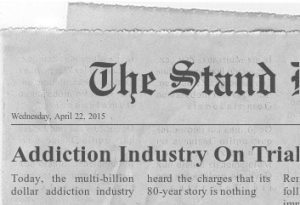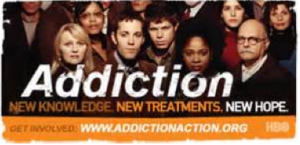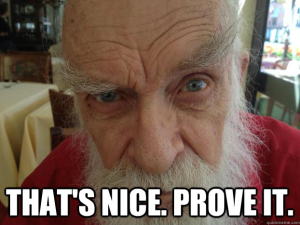Making The Case
Today, The Stand presents opening remarks in its argument that the addiction industry has misled the American public by claiming scientific certainty that addiction is a chronic brain disease, and by claiming that current treatment methods effectively manage the chronic disease. As will be shown, evidence fails to support either claim. Rather, in both cases, a preponderance of evidence suggests the opposite to be true.
The two assertions framing the modern day addiction industry did not originate with the National Institute on Drug Abuse (NIDA) that was created to “lead the nation in bringing the power of science to bear on drug abuse.” Nor were they postulated by any of the seven other National Institute of Health (NIH) Institutes[i] conducting research into specific aspects of addiction, or by any of the three NIH centers charged with addressing issues of addiction. And they did not come from any of the nation’s hundreds of additional private and public addiction science resources.
Rather, the statements were introduced by the founders of Alcoholics Anonymous in their 1939-published AA Big Book, where they pronounced addiction to be a chronic brain disease treatable through their 12-Step method. The idea grew in popularity and in the 1950’s, when early brain science named the midbrain reward system as addiction’s likely point of origin[ii], the American Medical Association (AMA) found sufficient reason to label alcoholism, or addiction, a medical disease to be treated[iii].
With NIDA’s introduction in 1974, the fledgling addiction industry embraced the increasingly popular, AMA-endorsed, though still unsupported premise, and harnessed it to develop and direct what has become a multi-billion addiction industry supporting million + jobs. Still today, the nation’s addiction research, education and treatment efforts continue to build from the underlying assumption that addiction is a chronic brain disease to be managed[iv].
The Trillion-Dollar Narrative[v]
Over One Trillion dollars has been spent in America teaching audiences, from as young as second graders[vi] through senior citizens, that modern science assures us addiction is a chronic brain disease which people can learn to manage through treatment.
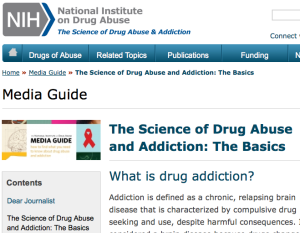 That message is repeated and amplified upon through multimedia programs, including a new book from NIDA, Drugs, Brains, and Behavior: The Science of Addiction, aimed at “clearing up common misconceptions and reducing the stigma associated with drug addiction.”
That message is repeated and amplified upon through multimedia programs, including a new book from NIDA, Drugs, Brains, and Behavior: The Science of Addiction, aimed at “clearing up common misconceptions and reducing the stigma associated with drug addiction.”
Detailed Media Guides, such as the one shown here, together with highly visible advertising campaigns and parent/teacher/student educational programs, all drive home the industry’s critical point, “Addiction is defined as a chronic, relapsing brain disease.”
To top it off, there’s a heavily promoted nine-segment HBO original film, featured among the many tools created or sponsored by NIDA and related institutes, that lend scientific credibility to the industry’s chronic brain disease claim.
Heck, they even assigned Substance Abuse and Addiction its own special set of awareness ribbons. It must be a serious brain disease. 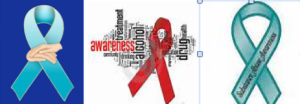
With that much expended effort, we have to wonder why Nora Volkow, Director of NIDA, still has to say, “Many Americans today do not yet understand why people become addicted to drugs or how remarkable scientific advances are literally redefining the arena of addiction.[vii]”
And it’s curious that she and others feel the need to argue so strenuously to convince us that “Groundbreaking discoveries about the brain have revolutionized our understanding of addiction.” And to assure us that, “We now know that addiction is a disease that affects both brain and behavior.”
So Much Excitement, And Still No Proof
So here’s the deal, if NIDA, and the rest of the sweeping addiction industry “know” that addiction is a chronic brain disease, if their scientific discoveries are so compelling as to “revolutionize” our understanding of addiction, don’t you think they’d be well served to stop telling us how “groundbreaking” their work is, and to start showing us the objective evidence – the proof – behind what they continually preach?
Sidebar: The Seduction Of “Evidence”
When we hear there is “evidence” to support a claim or position, especially if it is “scientific evidence.” we are inclined to accept it as truth.
But “evidence” is neither proof nor an assurance of truth or fact. It is merely evidence, or information gathered to support or to dispute an argument.
Scientific evidence is information gathered through research that, in time, might be proved true or false. Scientific evidence begins an investigation in search of the truth. It is not truth.
Objective evidence is information based on facts. It can be verified through analysis, measurement and use of conclusive observation or analytical tools. Objective evidence is proof. It is the truth.
Unfortunately, scientists do a great disservice when they promote “evidence,” such as colorful brain scans, as the basis for “knowing” that addiction is a chronic brain disease.[i]Because in truth, we are only just beginning to understand what the scans truly tell us[ii]. 
By implying the brightly colored scans are “objective evidence” of a chronic brain disease, they distract from the need to keep digging to learn “what” addiction is, and instead send researchers in search of new pharmaceuticals[iii] or other fixes for something yet to be identified.
If we wish to truly understand addiction, to really know what it is, we must be willing to challenge even highly credentialed “scientific evidence.” We must press the industry, or do the work ourselves, to get to the truth.
Don’t you think it’s time that they stop talking about how manageable addiction is, and start sharing verifiable data to demonstrate how measurably effective it can be?
Because very honestly, the conclusions being touted as the product of the industry’s “remarkable” scientific advances, literally “redefining the addiction arena,” are pretty much the same conclusions that were presented by Bill W. and Dr. Bob in their 1939 Big Book of Alcoholics Anonymous.
And the “exceptional breakthroughs” in treatment follow the same basic steps, targeting the same general goals set forth by the AA founders – to help people commit to a sober lifestyle and lifelong process of managing their addiction symptoms.
What’s “new” in treatment are a variety of supplemental elements, typically added to established methods, including a host of pharmaceuticals aimed at improving moods, lessening cravings, or substituting for specific addictive substances.  In some cases, technology-driven procedures such as deep brain stimulation[xi] are being explored as treatment enhancements, intended to redirect or discourage urges to seek and use substances.
In some cases, technology-driven procedures such as deep brain stimulation[xi] are being explored as treatment enhancements, intended to redirect or discourage urges to seek and use substances.
At least to date, the highly promoted, remarkable insights and treatment innovations, seem best compared with retread tires, where modern new techniques are being layered over established addiction beliefs and treatment methods. The effect has been new-looking practices that perpetuate the pattern of failure to help people recover, and failure to prevent or slow the growth of addiction[xii].
 Or maybe, with all of the glittering generalities being tossed about, the industry’s remarkable, amazing, exciting, efforts and breakthrough accomplishments[xiii] can better be depicted as a BeDazzler – adding shiny embellishments to entrenched views from the 1930’s, rather than seizing the opportunity to become the revolutionary reformer we so urgently need.
Or maybe, with all of the glittering generalities being tossed about, the industry’s remarkable, amazing, exciting, efforts and breakthrough accomplishments[xiii] can better be depicted as a BeDazzler – adding shiny embellishments to entrenched views from the 1930’s, rather than seizing the opportunity to become the revolutionary reformer we so urgently need.
I think it’s safe to say we missed the boat when the cutting edge science and imaging technology first came on the scene. It could have been applied to examine, and conceivably upend the outdated beliefs. It could have led researchers to see addiction, not as a disease, but as a wholly treatable condition, encouraging true innovation in treatment methods aimed at defeating addiction.  But instead, the technology was turned inward, and was focused on developing complex new explanations and techniques to embellish old ideas and practices.
But instead, the technology was turned inward, and was focused on developing complex new explanations and techniques to embellish old ideas and practices.
Today, eighty years after addiction was first declared a chronic disease of the brain, forty years following NIDA’s inception with its mission to apply science in the fight against addiction, and about 35 years since brain imaging technology arrived to offer never-before-imagined views of the brain and its functions – after all this time – we remain pretty much in the same place. The same beliefs; the same practices, made more complex with layered enhancements, but underneath, it’s all pretty much the same.
Getting Started
The major obstacle blocking needed advances in addiction treatment, is the simple fact that we really don’t know what addiction is, beyond its characteristic symptoms.
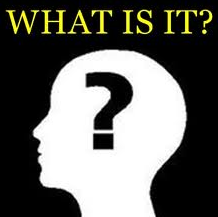 In spite of all we’ve been able to see and learn about the brain through the significant technological growth, scientists still have been unable to objectively detect or diagnose addiction.
In spite of all we’ve been able to see and learn about the brain through the significant technological growth, scientists still have been unable to objectively detect or diagnose addiction.
We cannot detect any impairment in the midbrain reward system long-thought to lead people to use substances[xiv]; we cannot identify an addiction gene, or point to the closing addiction bond in the executive brain area signaling full-blown addiction. We cannot quantify neurotransmitter dopamine volumes[xv] to identify what might be considered normal or abnormal, or simply to plot the full spectrum of NT output levels and mark individual volumes as falling within an average range or somewhere above/below the average.
In other words, none of the principle elements cited by the industry in defining addiction, beyond the symptomatic addicted behavior, can be detected. And as a result, the industry is without objective evidence and cannot prove its long held premise that addiction is a chronic brain disease, traced back to an impaired midbrain reward system.
In any other field that I’ve worked, if we had no actual proof to back our assertions, a swarm of attorneys would swoop in to remind us not to claim, or even suggest, that we “knew” what in fact we merely supposed, or wished something to be.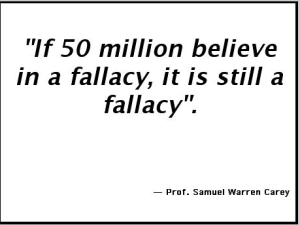
Because no matter how persuasive an argument might be, if its premise is flawed, the conclusions also must be flawed or at a minimum, questionable.
That being said, there will always be occasions where assumptions are all we have to work with. And that’s fine. That’s where most explorations begin.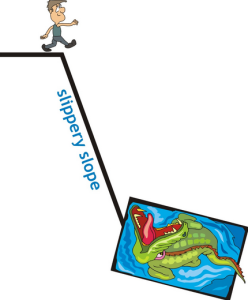
But the minute we assert that our assumptions, or the conclusions drawn from our assumptions, are more – are in fact certain, we’ve stepped onto the proverbial slippery slope. And when people’s lives are at stake, it can get very risky, very quickly.
This is what took place when the fledgling addiction industry first embraced, and then advanced, the early idea that addiction must be a chronic brain disease. (I mean, it made sense, right?)
The moment that assumption was stated, and than accepted as fact, at least two destructive events were set in motion:
 First, efforts to uncover the true nature of addiction were effectively shut down; the question had been answered, case closed.
First, efforts to uncover the true nature of addiction were effectively shut down; the question had been answered, case closed.
Second, having declared that the addiction industry “now knows” addiction to be a chronic brain disease, the unsupported assumption no longer was in question, but became a given, or certainty, from which future work in addiction research, policy and treatment would build.
In other words, the premier institute that was to “lead the nation in bringing the power of science to bear on drug abuse and addiction” led the nation in scientific exploration that, by definition, with its “given” being flawed, would produce questionable findings.
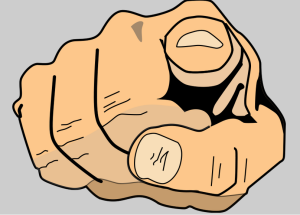 But as the industry’s efforts continually fail to improve treatment outcome, or to slow the spread of addiction, the premise remains unchallenged. Instead, we can count on accusing fingers to point to a zillion possible causes: The addicted person him or herself, the very nature of addiction, the need for more treatment and so on.
But as the industry’s efforts continually fail to improve treatment outcome, or to slow the spread of addiction, the premise remains unchallenged. Instead, we can count on accusing fingers to point to a zillion possible causes: The addicted person him or herself, the very nature of addiction, the need for more treatment and so on.
But through it all, we can be pretty sure that the blame won’t fall on the unproven, entrenched addiction premise that drives the whole show.
It’s Time To Re-open The Case 
To get at the truth, we’re going to have to re-open the case. And as with every case examination, we begin by summing up the situation. So, though we’ve covered it before, very quickly, this is where we are.
The Situation
There is one accepted view of addiction, which the industry claims to know for certain. It was first put forward in the early 1900’s to explain and give legitimacy to what had been an inexplicable and shunned pattern of behavior.
That explanation, that addiction is a chronic brain disease, gave rise to the 12-Step treatment method that offered hope and a sense of community to all affected. Together, the premise and method grew into a belief system and way of life for those affected by addiction that continues today.
The flourishing addiction industry, firmly staked on that belief, continues to serve as a stable foundation for building distinguished careers, reputations and investments that face little risk of challenge to their underlying principle. And its “relapse is a part of recovery” provision continues to fuel an attractive, self-perpetuating business model for those offering treatment.
Cutting edge imaging technology remains directed at matters stemming from the chronic disease premise, and typically loops back to reinforce the going-in beliefs. For example, imaging studies examining the potential effects of new pharmaceuticals on brain activity linked with symptoms of the addiction disease, produce findings viewed as new “scientific evidence” in the growing body of research investigating the addiction brain disease, that lead to potential “evidence-based” enhancements to the current treatment method aimed managing the chronic brain disease of addiction.
Through all this time, and with all the investment and dedicated brainpower, the incidence and devastation of addiction have grown without interruption.
The Question
Given this situation, the question is why so many smart people remain staunchly in step with the story about addiction being a chronic brain disease to be managed? And why do they work so very hard to make certain the rest of the world buys into the story as well?
Is it, as they say, just a matter of time until the technology is sufficiently advanced to detect the midbrain reward system impairment, or to quantify abnormal neurotransmitter volumes, or to objectively locate and examine the hard-wired closing bond of full-blown addiction? Is it a matter of our being patient until the technology can verify what the industry already claims to know?
Or might it be something simpler yet, that there is no impairment to detect, that neurotransmitter volumes vary by design, or that the closing bond of addiction is highly plastic?
The first possibility has come to be accepted on faith, which leaves the second unaddressed.
And so, in the absence of an authoritative voice or contradicting objective evidence to discredit the established belief, the prevailing assumption stands, with one known scientific principle backing it: Inertia.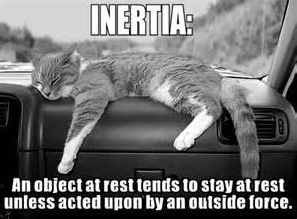
Every time one of the respected industry leaders states, “We now know that addiction is a brain disease,”[xvi] and no question is raised, the hole we’ve dug just gets a bit deeper.
And each time the industry leade rship claims, “This understanding has improved our ability to both prevent and treat addiction,[xvii]” and no one demands to see evidence of improvement, the impression of advancement and progress grows increasingly ingrained.
rship claims, “This understanding has improved our ability to both prevent and treat addiction,[xvii]” and no one demands to see evidence of improvement, the impression of advancement and progress grows increasingly ingrained.
I’ve had the good fortune to meet with many leaders of the premier NIH branches dealing with matters of addiction science and research. And when I questioned their chronic disease premise, offering an alternative perspective of what addiction might be, they uniformly responded that I just might be right.
But they would explain, that for now, what’s in place is the best that we have.
I swear that I’ve left each of these meetings feeling as though the respective leader had just given me their best Jack Nicholson response, 
Over on the treatment side of the industry, my same questions generally were met with accusations of being in denial or being ignorant; often with the added explanation that the subject was far too complicated to explain.
Though I’d ask them to try, in all honesty, very often, I just wanted to run away – run away. 
Why is it we don’t we stand and demand straight answers to our questions about addiction and its treatment? I think there are a couple of major reasons.
The first is our basic inclination to believe these respected leaders when they claim to know the truth; that it’s backed by scientific evidence.
But the second might be even greater. It’s the public’s lack of knowledge. The fact that it’s so hard to find unbiased information, presented in language people can understand, that doesn’t parrot the usual claims and positions that have been held up and repeated for so long.
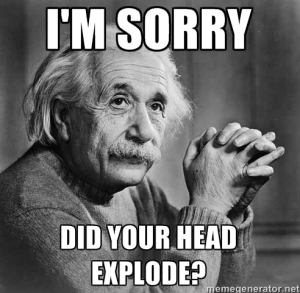 Could it be that the greatest obstacle to our standing up has been our not knowing enough to enter into a meaningful debate? That we haven’t known the questions to ask, or felt competent to argue against a position that’s backed an entire industry claiming that its proof is in the absence of proof?
Could it be that the greatest obstacle to our standing up has been our not knowing enough to enter into a meaningful debate? That we haven’t known the questions to ask, or felt competent to argue against a position that’s backed an entire industry claiming that its proof is in the absence of proof?
Yep, that’s what I said.
So how do we proceed?
In the absence of proof, we go after the truth.
I’m going to guess that some of you might be thinking, just whose version of the truth are you talking about?
And actually that’s a good question. By “truth” I’m referring to what we know based on proof; as well as to candor in identifying information that is assumed, believed, or even just tossed out as a possibility. And in this field, it’s not unusual to find that the truth is, no one really knows – yet.
Just to be clear, when I say that we’ll get down to the truth, I’m absolutely not claiming greater knowledge, or to have the “smoking gun” that would resolve all the questions surrounding addiction. (Though that would be so great.)
Nor am I accusing the industry of intentionally misleading audiences when claiming to “know” what is only “assumed,” or even flawed. Rather, I think what we have here is a textbook example of what can happen when research builds from an unsupported premise.
I am saying that when we stick with what actually is known, though the picture might be incomplete, we leave the door open to examine and explore assumptions and possibilities, with increased likelihood of ultimately uncovering the truth.
So in today’s environment, where technology in imaging and related fields is advancing so rapidly, continually revealing new insight and understanding of the brain, to have industry researchers claim the technology is too immature to find what they’ve decided must be there, and then frame what they do find as evidence of what can’t be detected, it’s little wonder we don’t even know the questions to ask. 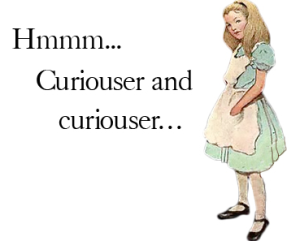
How To Reach The Truth
In order for us to get to the truth about the brain and addiction, to build a defensible definition capable of guiding measurably effective addiction treatment, we must get out the razor and slic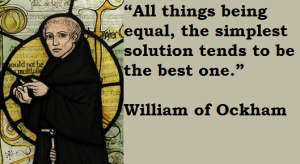 e away the distracting bells, whistles, embellishments, and layers of assumptions that have appeased audiences for decades.
e away the distracting bells, whistles, embellishments, and layers of assumptions that have appeased audiences for decades.
We need to apply the principles of Ockham’s Razor.
Ockham’s Razor says, “All things being equal, the simplest solution tends to be the right one,” or alternately, “we should not assert that for which we do not have some proof.”
In our situation, this task of simplification was a lot harder than imagined. But after years of sorting relevant data from addiction lore, the nuggets of truth tell us 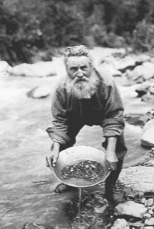 that addiction is not a chronic brain disease to be managed; that the one accepted definition of addiction, on which addiction research, education and treatment is based, does not stand up to scrutiny.
that addiction is not a chronic brain disease to be managed; that the one accepted definition of addiction, on which addiction research, education and treatment is based, does not stand up to scrutiny.
They reveal that the long-standing treatment method fails to help people manage their addiction for reasons including: It is treating the wrong condition; it contradicts what’s known about dynamic brain activity involved in reward and motivation, in decision-making, character development and learning; it ignores data telling us that the brain grows, changes, mends and adapts well into a person’s later years; and it disregards what’s been learned about the direct effect of expectancy on treatment outcome.
The Truth
As George Orwell (did you know his real name was Eric Arthur Blair?) declared,  “Telling the truth can be a revolutionary act.”
“Telling the truth can be a revolutionary act.”
The truth is, after winnowing out the hyperbole and unsupported information, we know enough to construct a viable working definition of addiction that guides needed research into open issues, and directs a clear-sighted goal of treatment, built from what is verified and believed to be so.
That said, the truth is that we don’t yet know enough to claim that we “now know” what addiction is. Therefore, any new definition and treatment method must remain open to new understanding, ready for meaningful updates to remain in sync with new learning across applicable fields.
Ockham’s Razor On The Threshing Floor
And here’s more truth: What we know about the brain and addiction needn’t be all that complicated and certainly can be explained. But as you’ve found, I’m not the most concise writer, and in this matter I want to be thorough, so I’m breaking the “case” into three segments.
1. Opening remarks: Background and Overview (this post).
2. What Is Addiction: A chronic and relapsing brain disease; (or) A learned behavior meeting the driven person’s need for intense reward? (Targeted posting, week of April 27)
3. Addiction Treatment: How the pillars of current treatment could be so right, and the treatment method fail so miserably? What’s right, what’s wrong and what needs to change? (Targeted posting week of May 11)
And one closing note. Please bear with me, though I’ve provided citations for sources, I am not taking the time right now to put them APA or MLA style format. Sorry.
[i] http://nih.go/icd/ Summary of NIH Institutes, Centers and Offices conducting cutting edge research building from the entrenched premise that addiction is a chronic brain disease. NIDA – National Institute of Drug Abuse, SAMHSA – Substance Abuse And Mental Health Services Association, NIAAA – National Institute of Alcohol Abuse and Alcoholism, NIBIB – National Institute of Biomedical Imaging and Bioengineering, NHGRI – National Human Genome Research Institute, NIGMS – National Institute of General Medical Science, NIMH – National institute of Mental Health, NINDS – National Institute of Neurological Disorders and Stroke, plus The NIH Fogarty International Center, with its mission of “promoting scientific research globally to limit disparities in teaching and treatment,” educating other nations in premise, addiction as a chronic brain disease, throughout the world. Also, NIH’s National Center on Complementary and Integrative Health (NCCIH) responsible for studying cross-treatment ideas and opportunities, as well as the NIH Clinical Center (CC) with its Neuroscience and Behavioral Health segment, both actively address issues related to addiction, as chronic brain disease.
[ii] David Lipton, Stanford Neuroblog, June 10, 2013, Olds & Milner, 1954: “reward centers” in the brain and lessons for modern neuroscience
[iii] Milestones in Neuroscience Research, http://faculty.washington.edu/chudler/hist.html
[iv] National Institute on Drug Abuse Research Monograph Series # 2 1975, #10 1977 and beyond. Disease concept introduced in #2 referenced with chronic diseases, and addresses need for consistency in definition and terminology.
[v] Richard Branson, CNN Special, Fri December 7, 2012, War On Drugs A Trillion Dollar Failure
[vi] NIDA Research Dissemination Center, Back to School anti-drug promotional publications
[vii] National Institute of Health MedLine Plus, Spring 2007, The Science of Addiction, Drugs, Brains and Behavior, Interview with Nora Volkow re HBO film on addiction.
[viii] Morley Safer, CBS, 60 Minutes, April 29, 2012, Morley Safer interview Nora Volkow, Director National Institute on Drug Abuse, Hooked, Why It’s Not So Easy To Just Say No.
[ix] McGovern Institute for Brain Research at MIT, Anne Trafton, May 1, 2014, News Room, Delving Deep Into The Brain.
University of California at San Diego, Tech 19176, UC Case 2007-283-0, A Method To Measure Neurotransmitters In Vivo
Amy Adams, October 2, 2014, Stanford University News, Stanford Report, Public policies for addiction, smarter prosthetics and stroke among the Big Ideas tackled by Stanford neuroscientists.
[x] The Charles R. Schuster Congressional Briefing Series, Sponsored by The Friends of NIDA, in conjunction with The Addiction, Treatment and Recovery Caucus, March 1, 2012, Developing Medications to Treat Addiction: Challenges for Science, Policy, and Practice.
[xi] Munte TF, Heinze HJ, Visser-Vandewalle V., Current Topics in Behavior Neurosciences, 2013, Deep Brain Stimulation as a Therapy for Alcohol Addiction.
Pierce RC, Vassoler FM, Psychopharmacology, Center For Neurobiology and Behavior, University of Pennsylvania, October 2013, Deep Brain Stimulation, Basic and Clinical Studies and Potential Mechanisms of Action.
J Luigjes, W Van den Brink, M Feenstra, P Van den Munckhof, P R Schuurman, R Schippers, A Mazaheri, T J De Vries and D Denys, Molecular Psychiatry, June 2012, Deep Brain Stimulation in Addiction: A Review of Potential Targets.
[xii] SAMHSA, Center For Behavioral Health Statistics and Quality, September 2014, Results from the 2013 National Survey on Drug Use and Health: Summary of National Findings.
Gary S. Becker, Kevin M. Murphy, The Wall Street Journal, January 4, 2013, Have We Lost The War On Drugs?
[xiii] LIONEL NY’s PIX 11 News Commentary Aired: February 20, 2012 Addiction, Dopamine & The Amazing Dr. Nora Volkow of NIDA; How She Has Redefined Addiction Through Brain Imaging
National Institute on Drug Abuse, News Release, April 13, 2013, NIH Study Sheds Light On How To Reset The Addicted Brain.
[xiv] Industry definition of addiction identifies a chronic brain disease traced back to a mesolimbic neurotransmitter dysregulation leading people to use substances. “NIDA continues to use the term ‘addiction’ to describe compulsive drug seeking despite negative consequences. However, ‘addiction’ is not considered a specific diagnosis in the fifth edition of The Diagnostic and Statistical Manual of Mental Disorders (DSM-5)—a diagnostic manual used by clinicians that contains descriptions and symptoms of all mental disorders classified by the American Psychiatric Association (APA).” Source National Institute on Drug Abuse, The Science of Drug Abuse and Addiction, April 2015.
George F. Koob, Michel L Moal, Science AAAS, Drug Abuse: Hedonic Homeostatic Dysregulation
Carlton K. Erickson, Recovery Today Online, Adapted from publication of the National Council on Alcoholism and Drug Dependence, Inc. (NCADD), March
Carlton K. Erickson, PhD, Addiction Essentials: The Go-To Guide for Clinicians and Patients, July 21, 2011
George F. Koob PhD, Michel L. Moal MD, PhD, Neuropsychopharmacy, 2001, Drug Addiction, Dysregulation of Reward, and Allostasis.
[xv] On counting neurotransmitters patent application for method to measure neurochemicals in vivo, Anne Trafton, May 2014, MIT McGovern Institute, Research News, MRI Sensor Allows Neuroscientists To Map Neural Activity With Molecular Precision.
[xvi] National Institute of Health, MedLine Plus, Spring 2007, pages 14 – 17, The Science Of Addiction, Drugs, Brains and Behavior.
[xvii] National Institute of Health, MedLine Plus, Fall 2011, Scientific Revolution Has Revolutionized Our Understanding of Drug Abuse and Addiction.
